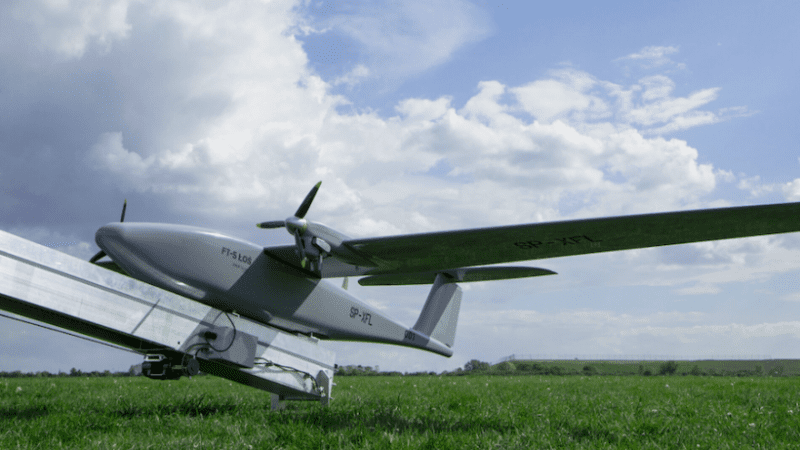Polish Armed Forces Looking to Procure Drones for Artillery Units. Two-Class Acquisition [COMMENTARY]

The Armament Inspectorate has announced that market consultation has commenced, aimed at informing the potential bidders on the requirements and plans of the Polish Ministry of Defence related to tactical short-range UAS platforms, and mini-UAVs. The plans would also cover the integration with the fire control system of the artillery and rocket component of the military. Therefore, it seems that the era of limited availability of reconnaissance assets among the Polish artillery units is gradually coming to an end.
The announcement tied to the planned consultation was publicized on 14th June. Throughout the consultation process, tied to the tactical short-range UAVs, the manufacturers would need to prove that the systems that they offer would comply with the minimum requirements that have been preliminary-defined. The requirements include operational radius at MTOW of no less than 100 kilometers, ability to continue the sortie and record the intelligence beyond the range of the control station (usable when UAV is transitioning to an area where it would be taken over by another control station), an operational ceiling of no less than 5 thousand meters ASL, an endurance of at least 5 hours, and take-off weight below 150 kilograms.
The possibility of meeting further requirements, including the possible integration of optronic sensor, radar, and target designator weighing at least 25 kilograms, also with the integration of the system with the Topaz fire control system used by the Polish artillery units would also be researched. The ability to provide reconnaissance capacity in different weather, and terrain conditions, also at night is also a subject of the study - this includes the use of daytime/night capable IMINT sensors, and SAR/GMTI radars. Further areas that are to be examined include the ability to take off and land without airfield infrastructure.
An announcement on the parallel consultation process tied to mini-class UAS for the artillery has also been published on 14th June. The minimum operational radius for these has been defined as 40 kilometers, with an operational ceiling of 3.5 km, 2 hours flight endurance, and MTOW of 12 kilograms.
The mini-UAVs for the artillery are expected to be able to carry an optronic sensor with daytime/thermal imaging cameras, weighing at least 2 kilograms. They are also required to sport a set of features similar to the tactical platforms - ability to continue the flight and intel-gathering activities outside the range of the control station, ability to carry out reconnaissance sorties in different terrain and weather conditions, and at night, and ability to carry out operations without airfield infrastructure. The systems in question are also required to be able to work with the Topaz C2 solution.
Requirements tied to training, logistics, supplies, infrastructure, lifecycle costs, and related issues are also going to be defined throughout the dialogue - for both platforms discussed here.
The specific requirements would be shared with the potential bidders once they submit proper requests. The deadline has been set as 30th June this year. The preliminary consultation process is planned to take place between July and September this year, but the period may be extended.
The fact that the consultations were launched may mean that the Polish Ministry of Defence is willing to introduce two classes of UAVs into its inventory. These would be integrated with the Topaz system as well. Currently, three FlyEye UAV sets are operated by the Polish artillery regiments. These are manufactured by the WB Group - which also manufactures the Topaz system. However, the requirements are far greater than that, as an unmanned system should be available to each artillery squadron - 12 of which are subordinated to the regiments alone. If one takes the brigade-level squadrons into the account, we are dealing with more than 20 artillery elements. And more elements would be formed, along with the new, 18th Mechanized Division.
The cooperation between the FlyEye UAVs and the artillery is a concept that has been operationally proven in Afghanistan, and appreciated by the NATO allies, throughout various exercises. Here, commentary should be added - even though the targets can be designated by a myriad of UAV platforms, only the ones integrated within the system provide direct datalink capability, also within the scope of adjusting the firing solutions. This is the main reason, probably, behind the ongoing dialogue.
The Polish military is currently procuring similar Orlik platforms (tactical short-range UAV) and Wizjer UAVs (mini-UAV). They have either been ordered (Orlik), or the procurement is in its final stages.
The PGZ-19R system has been selected to become the Orlik system - the Polish Ministry of Defence has allocated PLN 800 million to that acquisition a few years back. So far, not a single example of a series manufactured PGZ-19R has been rolled out. Wizjer UAVs are also expected to be supplied by the PGZ Group. These acquisitions are separate from the ongoing consultation. They pertain to the acquisition of equipment that would be received by the general-purpose reconnaissance units, and specific reconnaissance units of the individual branches of the military. They are not dedicated systems, for the artillery elements.
It seems then, that the artillery is about to receive a reconnaissance system of its own - that it expects, and that would be tailored to its needs. Back in July 2020, col. Marek Pawlak of the General Command of the Armed Forces told Defence24.pl: “Introduction of relevant UAV systems into the inventory of artillery squadrons, and artillery regiments, is planned to happen between 2023 and 2035. The supplier of the equipment would be selected within the framework of a procurement procedure led by the Armament Inspectorate, resulting on the grounds of a feasibility study”.
The consultation process we are witnessing is aligned with the aforesaid assumptions. It is quite probable that the WB Group mentioned above would be one of the bidders - able to offer FlyEye mini-UAV, and FT-5 Łoś tactical short-range UAV. Both have been integrated with the Topaz fire control system already.'
The ever-evolving approach that the Polish Ministry of Defence presents when it comes to the UAVs and the willingness to increase both the quantity and the variety of the systems have recently expressed themselves in the procurement of 24 TB2 UCAVs from Turkey. And neither is this acquisition a part of the Gryf acquisition (tactical medium-range UAV) nor does it happen within the framework of the Zefir program (MALE UAV).
So far we do not know what the final result of the search for the “artillery drones” is going to be. One thing is certain - the artillery, with its more and more effective assets, urgently needs reconnaissance systems. Rapid decision-making is necessary here.
